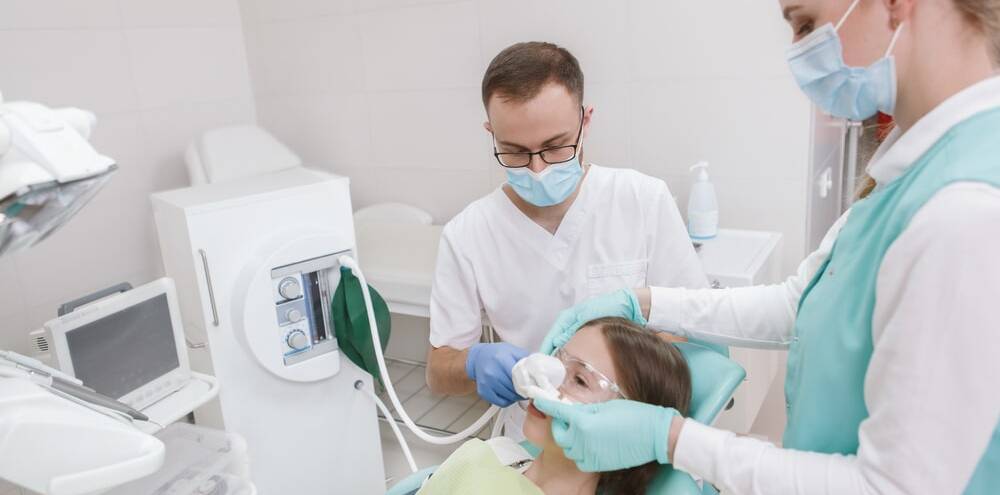Being a parent is no easy task; it’s a title that is fraught with challenges and difficulties. And one of the most toilsome undertakings is trying to get your children to develop good habits — namely, good dental hygiene habits. But regardless of how good their habits become, a trip to the dentist is inevitable. Some children have an easier time than others. But even with the ones that seem particularly nervous about the visit, there are ways to quell those anxious feelings.
Pediatric dental sedation is a safe, easy, and effective treatment that pacifies your child’s apprehensive qualms before and during dental procedures. But you might be wondering how to choose the most suitable form of dental sedation for your child. In this article, we’ll be exploring the options available.
The Types of Pediatric Dental Solutions
Based on the degree of anxiety your child experiences, their medical history, and the surgery that they require, your pediatric dentist will help you determine the proper sedation for your child based on the four sedations levels:
1. Wide Awake
This tactic doesn’t actually involve any sedation at all. But rather, a seasoned dentist exercises their ability to calm the child’s nerves long enough for the procedure to take place. The methods and techniques the dentist uses may include:
- Desirable stimulus
- Tell, show, do technique
- Diversion
- Body language communication tactics
- Protective equalization
- Presence of parents
During the dentist apprenticeship, all dentists receive training to become educated with these techniques.
2. Mindful Sedation
This is the light or moderate kind of sedation. Utilizing this form of sedation will cause your child to feel slightly comatose, but they’ll still be able to consciously respond to and interact with others.
This brand of sedation is much more effective on children in the age range of 4 to 6 years old relative to younger ones who may be only 2 or 3 years old. Dental anesthetists and pediatric dentists are the ones qualified to administer this kind of treatment. General dentists who enjoy working with kids don’t possess the same qualifications. However, they can complete formal training, which will permit them to dispense such medications.
This form of medication is executed by using:
- Nitrous Oxide (Laughing Gas)
Thought to be the most modest form of sedation, nitrous oxide is blended with oxygen and delivered through a small-scale breathing apparatus. This is a subtle way of administering the anesthesia as the effects halt once inhalation stops. Once this occurs, the nitrous oxide quickly dissipates from your child’s body and they return to normal.
- Oral Anesthesia (Drink or Pill)
This option delivers a subtle anesthetic effect tantamount to mild sedation. Even though the drowsiness may hinder cognitive function, your child will still be able to respond and answer questions verbally. Additionally, they will most likely be weary after surgery and have difficulty remembering what took place.
- Blending Nitrous Oxide and Oral Anesthesia
Each method is useful for long surgeries as they will provide a long-lasting sedative frame of mind.
Based on the medication being used, anesthesia might be necessary to soothe any pain while the surgery is happening. But one thing to keep in mind is that mindful sedation is oftentimes arbitrary and might change based on previous degrees of stress, the quantity of dental medication, and your child’s age.
3. Intense Sedation
This sedation will put your child fast asleep for the duration of the procedure. It’s usually done via the administration of tiny amounts of a particular prescription. This process can typically take 5 minutes — give or take. This option is utilized for its capacity to make reparatory dental procedures pleasant and tranquil for kids.
The potency of the sedation is simple to watch and easy to control. It can at times be a challenging task to use an IV when kids are awake and conscious. As a result, it’s often imperative to first sedate them while diverting their attention with TV or a game of some sort. The sedation slowly passes into the bloodstream through the IV, which results in the child’s immobilization.
Even with your child being unconscious and in deep sleep, they may still mutter, ramble, and even twitch with knee-jerk movements. This is normal and to be expected. Furthermore, your child won’t be able to remember or recall the treatment, this is also normal. And in addition to that, recuperation will take place over time. So patience is a virtue once everything is said and done.
4. Universal Anesthesia
This is the most potent form of sedation. Often used for more intensive surgeries and operations, the child will be in a deep, unconscious, sedative state. For this reason, they won’t have the capacity to breathe naturally, which means they will require assistance from machines. IV treatments and tubes for breathing will be administered to ensure the child remains asleep.
The results of this operation are predictable and anticipated. Tubes for breathing as well as IV medication must be used, and these will often be positioned once the child has been sedated by diverting their focus. Sedation of this degree should only be administered by properly trained and qualified medical professionals.
Is Sedation Right for My Child?
The answer to this question is dependent on a few factors such as the kind of operation they need, the length of said operation, the age of your child, etc. With the myriad of variables that are at play, you must consult with your dentist to determine what the best choice is for your child.







